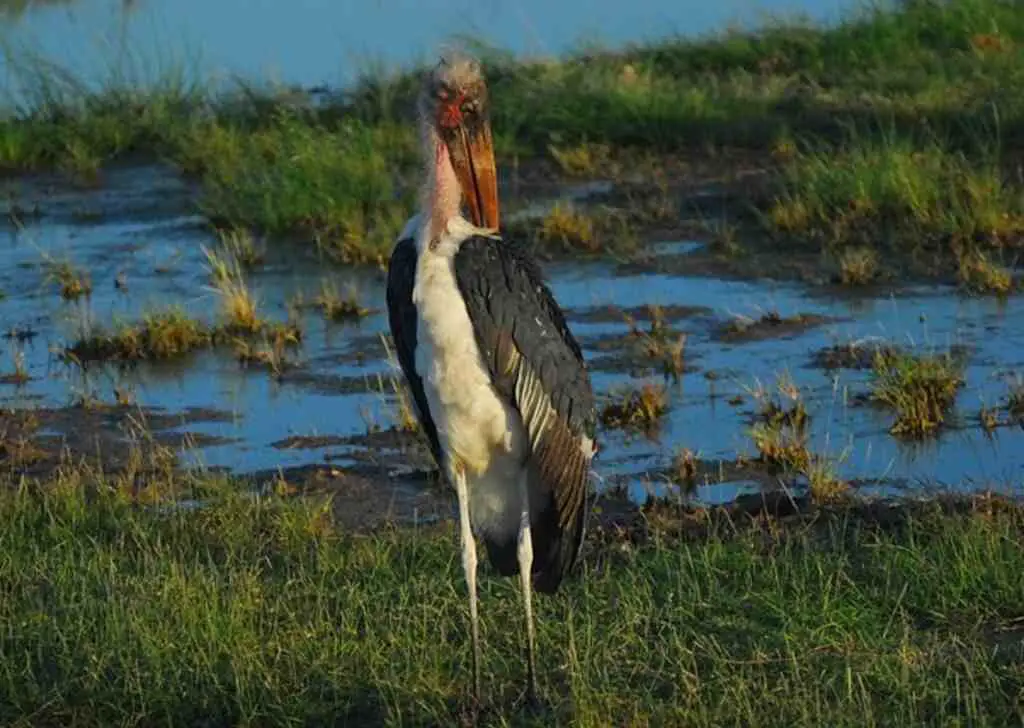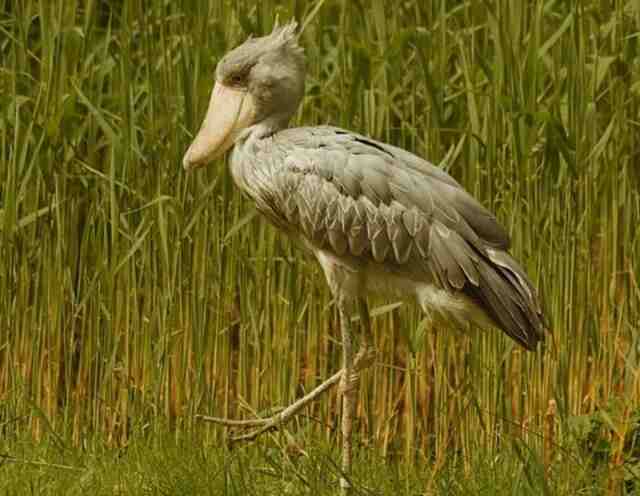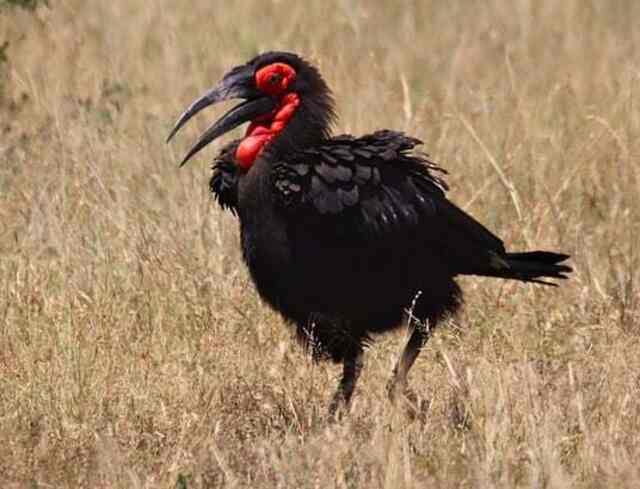For centuries, dinosaurs have fascinated scientists and the public alike. They roamed the earth for millions of years before going extinct, leaving behind only fossils and mysteries. One of the most intriguing questions is whether dinosaurs are more closely related to birds or reptiles. Understanding their evolutionary history is key to unlocking the secrets of these ancient creatures.
In this article, we will explore the anatomical similarities between dinosaurs and both birds and reptiles, the scientific methods used to determine their evolutionary relationships, and the ongoing debate surrounding this topic.
Table of Contents
- 1 Key Takeaways:
- 2 Are Dinosaurs Closer to Birds or Reptiles?
- 3 Dinosaur Anatomical Similarities to Birds
- 4 Dinosaur Anatomical Similarities to Reptiles
- 5 Phylogenetic Analysis of Dinosaurs
- 6 Fossil Evidence of Avian Reptile Transition
- 7 The Debate and Controversies
- 8 Feathered Dinosaurs and Their Implications
- 9 Reconstructing the Dinosaur-Bird-Reptile Connection
- 10 Key Findings and Conclusions
- 11 Conclusion
- 12 FAQs: Are Dinosaurs Closer to Birds or Reptiles?
- 12.1 What anatomical similarities do dinosaurs have with birds?
- 12.2 What anatomical similarities do dinosaurs have with reptiles?
- 12.3 How do scientists determine the evolutionary relationships between dinosaurs, birds, and reptiles?
- 12.4 What fossil evidence supports the avian reptile transition?
- 12.5 What ongoing debates and controversies exist regarding dinosaur evolution?
- 12.6 What is the significance of feathered dinosaurs in understanding dinosaur evolution?
- 12.7 How do scientists reconstruct the dinosaur-bird-reptile connection?
- 12.8 What are the key findings and conclusions from the study of dinosaur evolution?
- 13 Author
Key Takeaways:
- The debate on whether dinosaurs are closer to birds or reptiles is ongoing and important for our understanding of these ancient creatures.
- Understanding dinosaur evolution requires examining anatomical similarities with both birds and reptiles.
- Phylogenetic analysis and fossil evidence are important tools in reconstructing the evolutionary relationships between dinosaurs, birds, and reptiles.
- The discovery of feathered dinosaurs has provided significant insights into the connection between dinosaurs and birds.
Are Dinosaurs Closer to Birds or Reptiles?
Dinosaurs are closer to birds than they are to reptiles. Birds are actually considered a subgroup of dinosaurs, specifically theropod dinosaurs. This scientific understanding is based on extensive fossil evidence and shared characteristics between birds and certain dinosaur groups.
Many of the features that we associate with birds, such as feathers and hollow bones, were also present in some dinosaur species. Additionally, both birds and some dinosaurs were warm-blooded, which is a characteristic that separates them from most modern reptiles.
So, while birds are descendants of theropod dinosaurs, they are still classified as a type of dinosaur themselves, making the connection between dinosaurs and birds much closer than between dinosaurs and modern reptiles.
Dinosaur Anatomical Similarities to Birds
While the idea of dinosaurs being related to birds may seem far-fetched, the truth is that these two groups share many anatomical similarities. In fact, many scientists now believe that some dinosaurs were actually more closely related to birds than to reptiles.
One of the most striking similarities is the presence of feathers. While not all dinosaurs had feathers, many species did, including the famous Velociraptor and Archaeopteryx. Additionally, the skeletal structure of some dinosaurs closely resembles that of modern-day birds. For example, some dinosaurs had a furcula or wishbone, which is a key feature of avian anatomy. Other similarities include hollow bones and advanced respiratory systems.
These dinosaur bird features have helped scientists build a better understanding of the evolution of birds. By studying these anatomical similarities and their significance, researchers are uncovering more about the transition from avian reptiles to dinosaurs to modern-day birds.
Dinosaur Anatomical Similarities to Reptiles
Dinosaurs are often associated with reptiles due to their shared physical characteristics. One of the most significant similarities between dinosaurs and reptiles is their scaly skin, which is thought to have evolved as an adaptation for regulating body temperature. In addition to their skin, many dinosaurs also exhibit reptilian skeletal structures, including elongated tails, socketed teeth, and bony plates along their backs.
These similarities have led researchers to classify dinosaurs as a type of reptile. However, some experts argue that the anatomical features shared by dinosaurs and reptiles are the result of convergent evolution, rather than a direct evolutionary relationship. They point out that many bird species also exhibit reptilian traits, suggesting that the connection between dinosaurs and reptiles may be more complex than previously imagined.
Despite these ongoing debates, the anatomical similarities between dinosaurs and reptiles continue to be a subject of intense study and research. By uncovering more evidence about these relationships, scientists hope to gain a better understanding of the evolution of these fascinating creatures and their place in the history of life on Earth.
Phylogenetic Analysis of Dinosaurs
Phylogenetic analysis is an important tool used by scientists to determine the evolutionary relationships between organisms. In the case of dinosaurs, this involves the analysis of fossil evidence to determine how different species are related to one another and to modern-day birds and reptiles.
Early attempts at dinosaur phylogenetic analysis relied on simple comparisons of physical characteristics. However, as more fossils have been discovered and advances have been made in molecular biology, scientists have been able to refine their techniques and gain a more nuanced understanding of dinosaur evolution.
| Dinosaur Phylogenetic Analysis Techniques |
|---|
| Comparative Anatomy |
| Molecular Biology |
| Genetic Analysis |
| Cladistics |
Comparative anatomy involves comparing the physical features of different dinosaur species to identify similarities and differences. This can provide important insights into how different species are related to one another. Molecular biology and genetic analysis involve the study of DNA and other biological molecules to identify similarities and differences between species. This can provide a more detailed understanding of evolutionary relationships.
Cladistics is a method of organizing species into groups based on common ancestry. It involves the creation of a cladogram, which is a diagram that shows the evolutionary relationships between different species. This technique has been particularly useful in understanding the relationships between dinosaurs and modern-day birds.
Overall, phylogenetic analysis has played a crucial role in advancing our understanding of dinosaur evolution. As new fossils are discovered and new techniques are developed, scientists will continue to refine their understanding of the complex relationship between dinosaurs, birds, and reptiles.
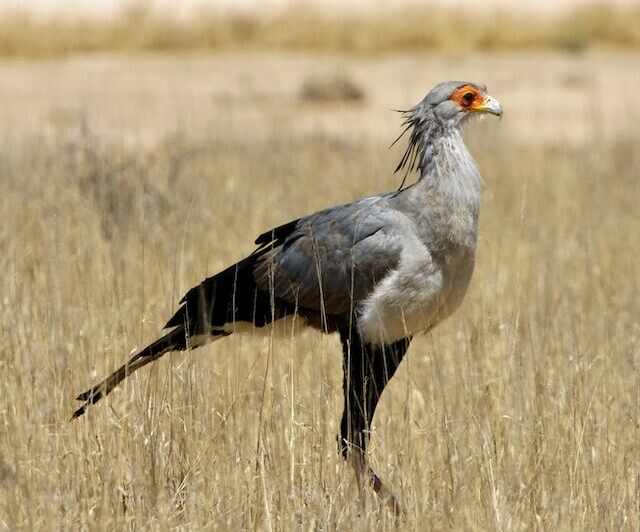
Fossil Evidence of Avian Reptile Transition
Over the years, paleontologists have discovered various fossils that provide compelling evidence of the transition from avian reptiles to dinosaurs. These fossils offer invaluable insights into the evolutionary history of these fascinating creatures.
One of the most significant discoveries is the Archaeopteryx, a bird-like dinosaur that lived in the Late Jurassic period. This fossil provides strong evidence that birds are descendants of dinosaurs. The Archaeopteryx had feathers, which are a characteristic of modern birds and is also a feature shared by many other theropod dinosaurs, including Velociraptor and Tyrannosaurus Rex.
Another important fossil is the Sinornithosaurus, a feathered dinosaur that lived in the Early Cretaceous period. This fossil is significant because it shows that feathers were not unique to birds and were present in certain dinosaur species. The Sinornithosaurus had feathers on its body, tail, and arms, and is believed to have been capable of gliding.
Other fossils that support the avian reptile transition include the Anchiornis, the Microraptor, and the Yixianosaurus. These fossils provide evidence of a gradual transition from avian reptiles to dinosaurs.
Overall, the fossil evidence strongly supports the idea that birds are descendants of theropod dinosaurs. While there is still much we don’t know about the evolutionary history of these creatures, the discovery of feathered dinosaurs has helped shed new light on the relationship between dinosaurs, birds, and reptiles.
The Debate and Controversies
Despite the wealth of scientific research in recent years, the question of whether dinosaurs are closer to birds or reptiles remains a topic of debate and controversy. Many scientists believe that birds are the direct descendants of certain dinosaur species, while others argue that dinosaurs share more similarities with modern-day reptiles.
Ultimately, this ongoing debate speaks to the complexities of dinosaur evolution and the challenges in interpreting the available evidence. While certain anatomical features suggest a bird-like connection, other characteristics point to a closer relationship with reptiles.
The Challenges of Interpreting Evidence
One reason for the ongoing debate is the inherent difficulty in interpreting fossil evidence. As researchers continue to uncover new fossils and make new discoveries, our understanding of dinosaur evolution is constantly evolving. Some scientists also argue that certain anatomical similarities between birds and dinosaurs may be the result of convergent evolution rather than a direct evolutionary link.
Differing Viewpoints Among Scientists
Another reason for the ongoing debate is the fact that scientists have differing viewpoints on how to interpret the evidence. While some prioritize the presence of bird-like traits, others argue that reptilian characteristics must also be taken into account. These differing viewpoints have led to a wealth of research on dinosaur evolution, but also highlight the complexity of this field of study.
The Need for Continued Research
Despite these challenges, the ongoing debate over the relationship between dinosaurs, birds, and reptiles highlights the need for continued research in this field. As new fossils are discovered and new research techniques are developed, our understanding of dinosaur evolution will continue to evolve. Ultimately, this ongoing research will shed new light on the complex relationships between these ancient creatures, deepening our understanding of the history of life on Earth.
Feathered Dinosaurs and Their Implications
One of the most significant discoveries in recent years has been the identification of feathered dinosaurs. These fossils provide a wealth of information about the physical characteristics and behavior of certain dinosaur species. In particular, they provide strong evidence for the connection between dinosaurs and birds.
The presence of feathers in certain species of dinosaurs highlights a number of key bird-like features. These include the presence of lightweight, powerful wings and aerodynamic body structures that suggest a capacity for flight. Additionally, the complex structure of feathers suggests the potential for coloration and display, which is often associated with social interaction and mating behavior.
Feathered dinosaurs also offer insights into the broader process of dinosaur evolution. They suggest that the development of bird-like features was a gradual process, rather than an abrupt shift. This further reinforces the idea that dinosaurs were closely related to birds and that the transition from avian reptiles to dinosaurs involved a complex process of adaptation and change.
Overall, the discovery of feathered dinosaurs has been a major breakthrough in the study of dinosaur evolution. It has provided compelling evidence for the connection between dinosaurs and birds, and has opened up new avenues of research in this field. As scientists continue to uncover new fossil evidence and refine their understanding of the phylogenetic relationships between dinosaurs and other species, it is likely that we will gain even deeper insights into the evolutionary history of these fascinating creatures.
Reconstructing the Dinosaur-Bird-Reptile Connection
Reconstructing the evolutionary relationship between dinosaurs, birds, and reptiles is a complex and ongoing process. Scientists use a variety of research techniques to better understand the similarities and differences between these ancient creatures.
Comparative anatomy is a vital tool in building a comprehensive understanding of dinosaur evolution. By studying the bones and other anatomical features of ancient species, scientists can identify key similarities and differences between dinosaurs and their modern descendants.
Genetic analysis is also important in the reconstruction of the dinosaur-bird-reptile connection. By comparing the DNA of different species, scientists can identify common genetic traits and trace evolutionary relationships over time.
Phylogenetic analysis
Phylogenetic analysis is another important method used in reconstructing the dinosaur-bird-reptile connection. This process involves the study of the evolutionary relationships between different species using data from fossils, comparative anatomy, and other sources.
Researchers use sophisticated software to analyze large amounts of data and identify patterns of similarity and difference between different species. The results of these analyses help to build a comprehensive understanding of the evolutionary history of dinosaurs and their relationship to birds and reptiles.
Differing viewpoints
Despite these research efforts, there remains significant debate and controversy surrounding the relationship between dinosaurs, birds, and reptiles. Some scientists argue that birds are the closest living relatives of dinosaurs, while others believe that reptiles are the better match.
There are also differing opinions on how to interpret the available evidence. Some scientists argue that the presence of feathers in certain dinosaur species is evidence of a close relationship with birds, while others suggest that feathers may have evolved independently in different lineages.
Clearly, much more research is needed to fully understand the complex relationship between dinosaurs, birds, and reptiles. However, with continued scientific inquiry and the discovery of new fossils, we can hope to gain a more complete understanding of these ancient creatures and their evolutionary history.
Key Findings and Conclusions
Throughout this article, we have explored the complex relationship between dinosaurs, birds, and reptiles. Our analysis of anatomical features and phylogenetic analysis of fossils has revealed that there are many similarities between dinosaurs and both birds and reptiles.
Additionally, we have presented evidence of the avian-reptile transition and highlighted the significance of feathered dinosaur fossils in understanding dinosaur evolution. However, the ongoing debate and controversies surrounding the topic remind us of the need for continued research in this field.
From our analysis, it is clear that the question of whether dinosaurs are closer to birds or reptiles is not a straightforward one to answer. Instead, it is a complex and evolving topic that requires a nuanced understanding of the available evidence. By applying comparative anatomy, genetic analysis, and other research techniques, scientists can continue to reconstruct the dinosaur-bird-reptile connection and uncover more insights into the evolution of these fascinating creatures.
Conclusion
In conclusion, the question of whether dinosaurs are closer to birds or reptiles remains a topic of ongoing scientific debate. Through examining anatomical similarities, phylogenetic analysis, and fossil evidence, scientists have uncovered a complex and intricate web of evolutionary relationships between these ancient creatures.
The discovery of feathered dinosaurs has added a new dimension to this ongoing inquiry, offering important insights into the connection between dinosaurs and birds. Meanwhile, the presence of reptilian characteristics in certain dinosaur species highlights the importance of understanding the reptile-dinosaur relationship.
Despite the challenges in interpreting the available evidence and the controversies that surround this issue, continued research in this field promises to shed new light on dinosaur evolution and offer important insights into the origins of modern-day birds and reptiles. So, are dinosaurs closer to birds or reptiles? The answer may be more complex than we ever imagined.
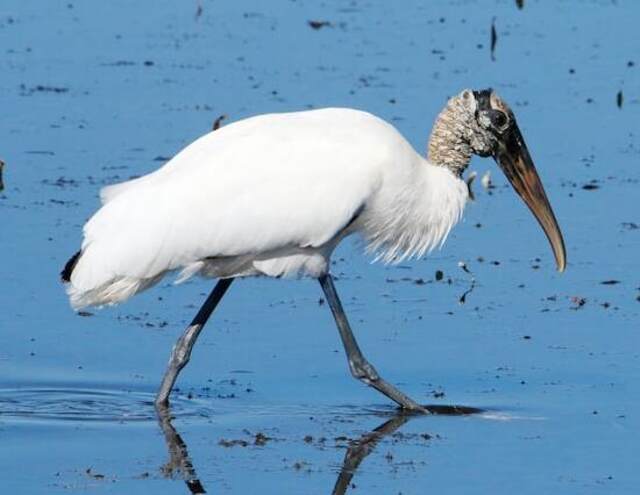
FAQs: Are Dinosaurs Closer to Birds or Reptiles?
What anatomical similarities do dinosaurs have with birds?
Dinosaurs share several anatomical features with birds, including the presence of feathers, avian-like skeletal structures, and some bird-like characteristics. These similarities indicate a close evolutionary link between certain dinosaur species and modern-day birds.
What anatomical similarities do dinosaurs have with reptiles?
Like reptiles, certain dinosaur species exhibit characteristics such as scales, reptilian skeletal structures, and other reptile-like features. These similarities suggest a shared ancestry between dinosaurs and reptiles, although their relationship to birds is now better supported by scientific evidence.
How do scientists determine the evolutionary relationships between dinosaurs, birds, and reptiles?
Scientists use phylogenetic analysis to study the evolutionary relationships between organisms. By comparing the anatomical and genetic characteristics of different species, researchers can construct phylogenetic trees that depict the shared ancestry and evolutionary connections between dinosaurs, birds, and reptiles.
What fossil evidence supports the avian reptile transition?
Fossil evidence, including the discovery of feathered dinosaur fossils, provides strong support for the transition from avian reptiles to dinosaurs. These fossils showcase the development of feathers and other bird-like features in certain dinosaur species, providing important insights into the evolutionary history of dinosaurs and their relationship to birds and reptiles.
What ongoing debates and controversies exist regarding dinosaur evolution?
The relationship between dinosaurs, birds, and reptiles remains a topic of debate and controversy among scientists. Differing viewpoints exist regarding the interpretation of available evidence and the evolutionary connections between these groups. The field is continually evolving as new research and discoveries are made.
What is the significance of feathered dinosaurs in understanding dinosaur evolution?
The discovery of feathered dinosaurs has had a significant impact on our understanding of dinosaur evolution. These fossils provide direct evidence of the presence of feathers in certain dinosaur species, supporting the theory of the bird-dinosaur relationship and challenging previous assumptions about dinosaur appearance and behavior.
How do scientists reconstruct the dinosaur-bird-reptile connection?
Scientists use a combination of comparative anatomy, genetic analysis, and other research techniques to reconstruct the dinosaur-bird-reptile connection. By studying the similarities and differences in anatomical features and genetic sequences, researchers can build a comprehensive understanding of the evolutionary relationships between dinosaurs, birds, and reptiles.
What are the key findings and conclusions from the study of dinosaur evolution?
The study of dinosaur evolution has revealed that dinosaurs are more closely related to birds than reptiles. The discovery of feathered dinosaur fossils and the shared anatomical features between dinosaurs and birds provide compelling evidence for this relationship. Continued research is essential to further our understanding of these ancient creatures.

